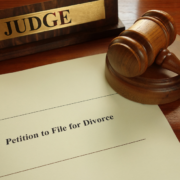If your marriage is nearing its end, should you file for divorce first? Does it matter who initiates the divorce process here in Bucks County? It may, but this doesn’t mean you should rush to file when you aren’t ready. An experienced divorce lawyer can help you work out an individually tailored legal strategy for this challenging time.
Does It Matter Who Files for Divorce?
In many cases, filing for divorce first can give you an advantage, both throughout the divorce process and in its financial and emotional outcome. First, you’ll have your pick of local divorce attorneys. A divorce lawyer can’t represent both sides in a divorce due to a conflict of interest, so whatever legal professional your spouse has already talked to would be off-limits to you.
Initiating the divorce can also help with financial planning. For example, if you’ve been a stay-at-home parent throughout your married life, you may be financially vulnerable and need, not just more time, but to control the start of the process.
Taking a proactive approach to the divorce process could give you enough time to collect all your financial information (like savings and retirement accounts) and possibly prevent your spouse from siphoning joint funds. You could start separating your finances from your spouse’s and look into insurance plans if you have relied on your spouse’s insurance until now.
Finally, strategically timing the divorce could help you prepare mentally and emotionally. You could begin helping your children process the upcoming shift, start building a supportive social network, and plan for changes like leaving your home, relocating, enrolling your children in different schools, or starting a new job.
Potential Drawbacks of Filing First
“Should you file for divorce first?” may have a different answer if you aren’t sure you want to end your marriage right now, even if you know it’s falling apart. For example, maybe you’re dealing with health issues or have other considerations that might make you decide to delay divorce if possible.
You should also consider family dynamics, such as how your spouse may react to your filing for divorce. If possible, you should try to avoid a hostile escalation that will make any negotiations difficult.
Finally, ending a marriage costs money, so you may have to plan ahead to make sure you can afford a divorce.
Uncontested Divorce in NJ and PA
An uncontested divorce is a friendlier and less stressful alternative to filing first or waiting for your spouse to take this step.
In this scenario, you and your spouse sit down to agree on important matters like property division, spousal support, and child custody. When you finalize your divorce settlement agreement, you’ll file a joint petition for divorce.
If both sides are willing to work together and compromise, an uncontested divorce can save a lot of time and prevent conflicts. Just make sure to consult a divorce lawyer first to ensure you sign a fair and reasonable agreement.
Considering Divorce? Call Karen Ann Ulmer, P.C.
If you are wondering, “Should you file for divorce first?” contact the legal team at Karen Ann Ulmer, P.C. Our skilled and empathetic team will protect your interests and help you navigate divorce with minimum stress. Book a consultation today.



